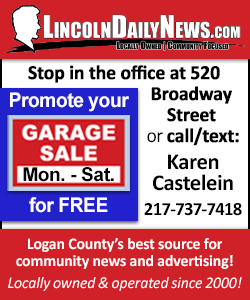8.8-magnitude earthquake sends tsunami into coasts of Russia, Japan and
Hawaii
[July 30, 2025]
By MARI YAMAGUCHI
TOKYO (AP) — One of the strongest earthquakes ever recorded struck
Russia’s Far East early Wednesday, sending tsunami waves into Japan,
Hawaii and the U.S. West Coast. No substantial damage has been reported
so far, but authorities warned people away from shorelines and said the
risk could last more than a day.
Ports on the Kamchatka Peninsula in Russia near the 8.8 magnitude
quake’s epicenter flooded as residents fled inland, and frothy, white
waves washed up to the shore in northern Japan. Cars jammed streets and
highways in Hawaii’s capital, with standstill traffic even in areas away
from the shoreline.
People went to evacuation centers in affected areas of Japan, with
memories fresh of the 2011 earthquake and tsunami that caused reactor
meltdowns at a nuclear power plant. No abnormalities in operations at
Japan's nuclear plants were reported Wednesday.
Russian authorities said several people were injured, without giving a
figure. In Japan, at least one person was injured.
A tsunami height of 3-4 meters (10 to 13 feet) was recorded in
Kamchatka, 60 centimeters (2 feet) on Japan's northern island of
Hokkaido, and up to 1.4 feet (under 30 centimeters) above tide levels
were observed in Alaska's Aleutian Islands.
Hours after the quake, Hawaii downgraded its tsunami warning to an
advisory, while Japan’s Meteorological Agency also lowered its alert to
an advisory in the Pacific coast south of Fukushima. The alert still in
place farther north.
Maj. Gen. Stephen Logan, the Adjutant General of the State of Hawaii
Department of Defense, said an advisory means there is the potential for
strong currents and dangerous waves, as well as flooding on beaches or
in harbors.

Hawaii and Oregon warn residents of potential damage
The impact of the tsunami could last for hours or perhaps more than a
day, said Dave Snider, tsunami warning coordinator with the National
Tsunami Warning Center in Alaska
“A tsunami is not just one wave,” he said. “It’s a series of powerful
waves over a long period of time. Tsunamis cross the ocean at hundreds
of miles an hour -- as fast as a jet airplane -- in deep water. But when
they get close to the shore, they slow down and start to pile up. And
that’s where that inundation problem becomes a little bit more possible
there."
“In this case, because of the Earth basically sending out these huge
ripples of water across the ocean, they’re going to be moving back and
forth for quite a while,” which is why some communities may feel effects
longer, he said.
Hawaii Gov. Josh Green said data from Midway Atoll, which is between
Japan and Hawaii, measured waves from peak to trough of 6 feet (1.8
meters). He said waves hitting Hawaii could be bigger or smaller and it
was too early to tell how large they would be. A tsunami of that size
would be akin to a 3-foot (90-centimeter) wave riding on top of surf, he
said.
“This is a longitudinal wave with great force driving through the
shoreline and into land,” he said at a news conference.
Green said Black Hawk helicopters have been activated and high-water
vehicles were ready to go in case authorities need to rescue people.
“But please do not put yourself in harm’s way,” he said.
The Oregon Department of Emergency Management said on Facebook that
small tsunami waves were expected along the coast starting around 11:40
p.m. local time, with wave heights between 1 to 2 feet (30 to 60
centimeters). It urged people to stay away from beaches, harbors and
marinas and to remain in a safe location away from the coast until the
advisory is lifted.
“This is not a major tsunami, but dangerous currents and strong waves
may pose a risk to those near the water,” the department said.
Much of the West Coast, spanning California, Washington state, and the
Canadian province of British Columbia, was also under a tsunami
advisory.
A tsunami of less than 30 centimeters (under 1 foot) was forecast to hit
parts of Vancouver Island, British Columbia. The province’s emergency
preparedness agency said waves were expected to reach remote Langara
Island around 10:05 p.m. Tuesday and Tofino around 11:30 p.m. The agency
said “multiple waves over time” were expected.

[to top of second column]
|

In this image taken from a video released by Russian Emergency
Ministry Press Service, rescuers inspect a kindergarten damaged by
an earthquake in Petropavlovsk-Kamchatsky, Russia, Wednesday, July
30, 2025. (Russian Emergency Ministry Press Service via AP)

Russian regions report limited damage
The quake at 8:25 a.m. Japan time had a preliminary magnitude of
8.0, Japanese and U.S. seismologists said. The U.S. Geological
Survey later updated its strength to 8.8 magnitude and a depth of
20.7 kilometers (13 miles).
The quake was centered about 119 kilometers (74 miles)
east-southeast from the Russian city of Petropavlovsk-Kamchatsky,
which has a population of 180,000, on the Kamchatka Peninsula.
Multiple aftershocks as strong as 6.9 magnitude followed.
Severokurilsk Mayor Alexander Ovsyannikov said the port in the city
was flooded by tsunami waves, washing fishing boats into the sea. He
said that no major damage was recorded.
Power supplies have been shut and the authorities were checking the
power network after the flooding.
Among the world's strongest recorded quakes
The earthquake appeared to be the strongest anywhere in the world
since the 9.0 magnitude earthquake off northeastern Japan in March
2011 that caused a massive tsunami that set off meltdowns at a
nuclear power plant. Only a few stronger earthquakes have ever been
measured around the world.
The tsunami alert disrupted transportation in Japan, with ferries,
trains and airports in the affected area suspending or delaying some
operations.
A tsunami of 60 centimeters (2 feet) was recorded at Hamanaka town
in Hokkaido and Kuji port in Iwate, according to the Japan
Meteorological Agency. Several areas reported smaller waves
including 20 centimeters (8 inches) in Tokyo Bay five hours after
the quake.
In Japan’s northern coastal town of Matsushima, dozens of residents
took refuge at an evacuation center, where water bottles were
distributed and an air conditioner was running. One person told NHK
she came to the facility without hesitation based on the lesson from
the 2011 tsunami.
Japan’s Chief Cabinet Secretary Yoshimasa Hayashi warned evacuees
that they may not be able to return home by the end of the day, as
the tsunami waves could remain high.

Japanese nuclear power plants reported no abnormalities. The
operator of the Fukushima Daiichi plant damaged by the 2011 tsunami
said about 4,000 workers are taking shelter on higher ground at the
plant complex while monitoring remotely to ensure safety.
Philippine authorities advised people to stay away from the beach
and coastal areas. “It may not be the largest of waves, but these
can continue for hours and expose people swimming in the waters to
danger,” Teresito Bacolcol of the Philippine Institute of
Volcanology and Seismology told The Associated Press.
Mexico’s navy warned that tsunami waves will start reaching the
northern coast in Ensenada, near California, at around 02:22 a.m.
Wednesday local time, and waves could progress along the Pacific
coast to Chiapas state, around 07:15 a.m. local time.
New Zealand authorities warned of “strong and unusual currents and
unpredictable surges” along all coastlines of the South Pacific
island nation. The emergency management agency said people should
move out of the water, off beaches and away from harbors, marinas,
rivers and estuaries.
People were urged to stay away from coastlines until any wave surges
passed late Wednesday in Fiji, Samoa, Tonga, Federated States of
Micronesia and Solomon Islands.
Some tiny and low-lying Pacific island chains are among the world’s
most imperiled by tsunamis and rising seas due to climate change.
Earlier in July, five powerful quakes — the largest with a magnitude
of 7.4 — struck in the sea near Kamchatka. The largest quake was at
a depth of 20 kilometers and was 144 kilometers (89 miles) east of
the city of Petropavlovsk-Kamchatsky.
All contents © copyright 2025 Associated Press. All rights reserved |